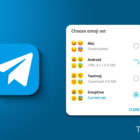What Is A Home Computer Server?
Some people are confused (or just have the wrong idea) about what a computer server actually is.
The technical definition is that a server is a computer dedicated to providing a specific service or services.
Concerning what you would use in the home, the most common example is a file server, i.e. a computer where its sole purpose in life is to store files you can upload or download at any time on your home network.
What qualifies as a home file server?
It can be any computer. It does not have to be some refrigerator-sized monster box.
Why would you use a file server in the home?
Because if you have gigs and gigs (possibly terabytes) of files it’s better to store that on a computer that’s not your primary system so your OS runs smoother. (The less your hard drive gets “beat up” the better.)
Example use: If you do a lot of DVR, having a file server would definitely serve to your advantage.
Does an external hard drive count as a file server?
No, because it’s not a computer. A server technically has to be a computer with an OS on it.
What’s the best file server setup?
Although this could be put up for debate, the best setup is usually a Linux distro with no GUI whatsoever. The box is completely administered remotely (as in over the network via telnet session from your primary computer) and the box itself only has two cables plugged into it, that being the power cable and a network cable. In this setup the OS uses the least memory possible to deliver maximum performance.
Why Linux?
Aside from the speed, the file system it uses (ext2 or ext3) is better suited than Windows NTFS for server-specific stuff. Never do you have to worry about “defragging” the drive with a Linux partition because you simply don’t have to.
What if you wanted to use Windows instead?
If you don’t feel like using Linux you can use any Windows OS as long as its an NT-based Windows like Windows NT 4.0, 2000, XP or Vista with an NTFS partition. If you use FAT32 the inherent problem is that you won’t be able to store any files over 4GB in size because that type of partition won’t allow it, so never use FAT32 in a home server setup because yes, you inevitably run into the 4GB filesize limit problem.
The Windows you use on a file server should be stripped down as much as possible. Disable every service that’s not necessary, such as Themes, Error Reporting and so on because it’s simply not required. Don’t run a screen saver, don’t use any wallpaper, etc.
What are the most important components of a home file server?
The hard drives and the network card, in that order.
Don’t put cheap hard drives in a home file server. Spend some cash and get decent ones.
PATA or SATA drives? The answer here might surprise you, but the answer is PATA. Why? Because generally speaking PATA drives consume less power. Since this is a box that’s just going to sit there most of the time, you want it to consume the least electricity possible.
Your router is most likely 100-megabit enabled. Use a network card that takes full advantage of this.
Should your home file server be wireless?
If you have the choice, no. It should be “hard wired” to the router. Makes for better file transfers and far less chance of data going corrupt – not to mention the transfer speed is much faster (assuming the other computers connected are also hard wired).
Does the router count?
Absolutely it does. If you find that when transferring large files you have a “hard time” completing the transfer (or it never completes) even when wired, you need to get a better router.
The best routers are usually Cisco – but they cost a bit of money. Linksys and D-Link are also very good choices for the home as well.
Tip: If you have a decent router but are still having problems, replace the network cable. 99% of all wired LAN problems start (and usually end) with cabling.
Does the file server have to be a super-fast computer box?
No. All it needs to do is be able to support the hard drives and 100mbit card you put into it. You could get away with something as slow as a Pentium II 233MHz – but in that case you’d absolutely have to used a no-GUI Linux because a NT-based Windows would slow it down to a crawl in short order.
Did I miss anything? Got a suggestion?
Feel free to chime in with a comment or two.

















9 thoughts on “What Is A Home Computer Server?”
I would also like to use something like an Ipod to access and make selections. Any ideas on how to do this?
How about Apple’s Time Capsule?
How about notations about server applications vs. desktop apps?
Really, if you’re going to recommend Linux as the primary OS for a file server, you’d better be prepared to talk about the user learning curve with regard to installation, security, navigation, etc.
If you want server-specific apps, go to the cloud. Serving locally is not inherently portable and requires way too much effort to get the same thing you can get online for free.
My point is that there are numerous variables that should be considered when recommending a “home server” for users, not the least of which should be the costs incurred in time and learning curves. If you’re recommending Linux simply because it’s “free,” then I think that is the least consideration for most new users.
I’m not knocking Linux; I used the Red Hat distro for years.
Being there are several types of Ethernet (10BASE-T, 100BASE-TX, 1000BASE-T, etc.) it is better to term it as “network cable” unless referring to a very specific setup.
The performance on an old machine will be very slow for file transfers or home website running of an old computer such as a Pentium 2 with 100 megabit/s network card, but it is doable.
For more than basic abilities of the server computer, consider gigabit network cards, and as fast of a computer as you are able for the server.
My general rule of thumb is that if files transferred are CD-sized (i.e. 700MB) and under, 10/100 is fine even on a slow file server computer box. But for 700+, 1000mbit is more or less required along with better hardware and drives that are better suited to the task.
Anyway, my server machine runs a stripped-down linux system without X. I’m sure that helps a lot, especially if the box is very old. Not to mention the stability: The only way for my server to fail is in case of a blackout!
If the server is Windows based however, then I guess you need a more powerful (recent) machine.
It not only lets you setup the obilgatory shares (and users who can access them), also a print server, a VPN (virtual private netowrk), shared calendar, Wiki, and it’s an expandable platform!
Take a look!
http://www.newegg.com/Product/Product.aspx?Item=N82E16833156026
http://www.newegg.com/Product/Product.aspx?Item=N82E16833156213